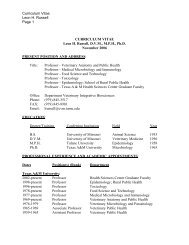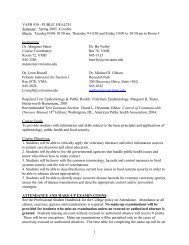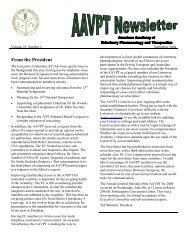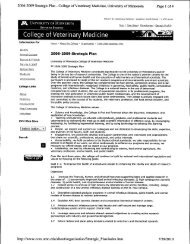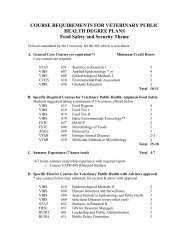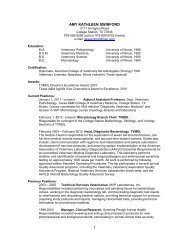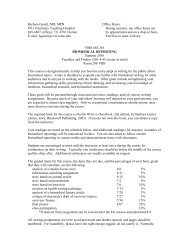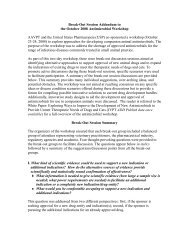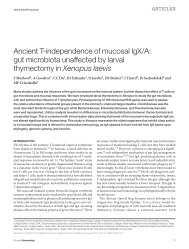View PDF - College of Veterinary Medicine - Texas A&M University
View PDF - College of Veterinary Medicine - Texas A&M University
View PDF - College of Veterinary Medicine - Texas A&M University
You also want an ePaper? Increase the reach of your titles
YUMPU automatically turns print PDFs into web optimized ePapers that Google loves.
Supplemental Figure 6: S100Z locus synteny. S100Z genes are shown in red. Syntenic<br />
genes found in at least two mammalian genomes are shown in grey. Gene polygons point in<br />
transcriptional orientation. Black lines denote intergenic space where no other genes were<br />
detected, except where blocks <strong>of</strong> genes inserted below. Dashed arrow highlight a syntenic<br />
gene that has been translocated. Orthologs between species are vertically aligned and<br />
distances are not to scale.<br />
Supplemental Figure 7: Pairwise identity matrix for mammalian S100A7 loci. Number <strong>of</strong><br />
predicted amino acid substitutions per site using a Dayh<strong>of</strong>f matrix based model analyzing 108<br />
positions between 12 sequences. Darker pink in the heatmap indicates greater divergence<br />
between the two sequences.<br />
Supplemental Figure 8: Amino acid alignments for mammalian S100A7 loci. Amino acid<br />
sequences <strong>of</strong> mammalian S100A7 family members. Dashes indicate gaps inserted for<br />
alignment to other family members. The S100 (pseudo) EF-hand Ca 2+ binding loop is in dark<br />
blue, the C-terminal EF-hand Ca 2+ binding loop in light blue, the linker region connecting the EF-<br />
hands in green, alpha-helices in black, and non-helical regions in gray.<br />
Page 10




